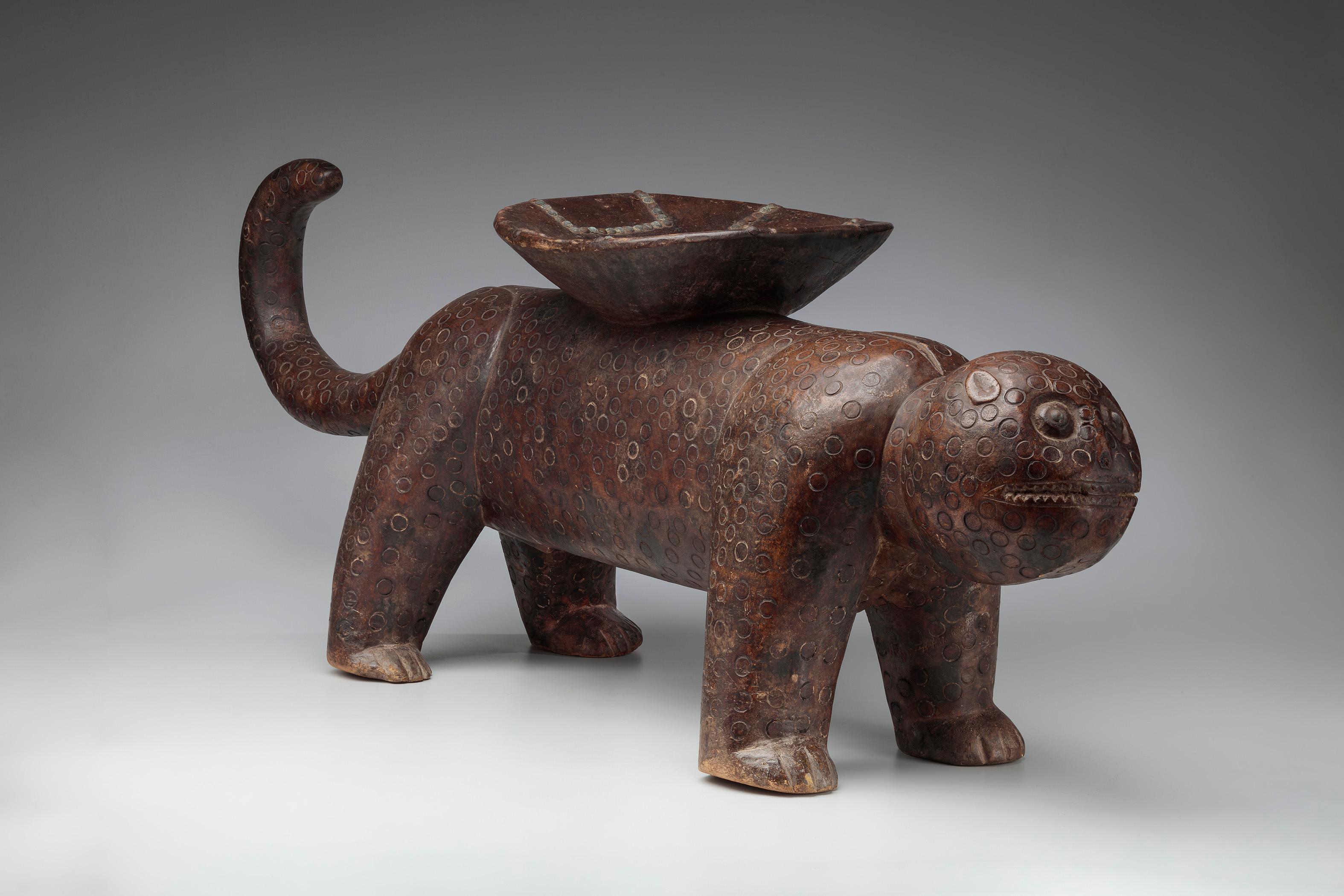Ceremonial Stool of Nana Azia-Ntoa III
Artist: Baule People
Artist: Akan Peoples, Ahanta group
Date: early 20th century
Dimensions:
48 in. (121.9 cm)
Medium: wood, metal studs, and kaolin
Place of Origin: Ivory Coast (Cote d'Ivoire)
Classification: Furniture
Credit Line: Purchased with funds given by Dorothy Mackenzie Price
Object number: 2005.48
Label Text:Along Africa’s Guinea Coast, kings and chiefs sit on ceremonial stools for grand public events. Leopards are associated with kings and leaders throughout Africa, so carving the seat on the back of the royal animal is a dramatic symbol of power. Traces of kaolin (white clay) on the surface show that the pigment was applied repeatedly to enhance the leopard’s spots. This Baule stool was acquired by the Museum with a letter from a ruler from the neighboring Akan people, Nana Azia-Ntoa III, who explained that the stool came out “only on ceremonial days,” when it was “announced by ceremonial drummers early in the morning before sunrise.”
DescriptionRoyal stool supported by a leopard. Head, body, legs, and seat carved from a single block of wood; the tail carved from a separate piece of the same wood and joined. Metal tacks used to ornament the top of the seat-some iron, others brass and/or copper. Many types of stools and chairs are made for public use in West Africa. The larger and less portable they are, the more prestigious for the owner.
Royal stool supported by a leopard.
Head, body, legs, and seat carved from a single block of wood; the tail carved from a separate piece of the same wood and joined. Metal tacks used to ornament the top of the seat--some iron, others brass and /or copper.
Many types of stools and chairs are made for public use in West Africa. The larger and less portable they are, the more prestigious for the owner.
Royal stool supported by a leopard.
Head, body, legs, and seat carved from a single block of wood; the tail carved from a separate piece of the same wood and joined. Metal tacks used to ornament the top of the seat--some iron, others brass and /or copper.
Many types of stools and chairs are made for public use in West Africa. The larger and less portable they are, the more prestigious for the owner.
Not on view
In Collection(s)





